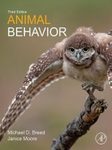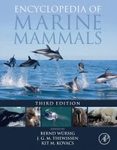By: Darryl I MacKenzie(Author), James D Nichols(Author), J Andrew Royle(Author), Kenneth H Pollock(Author), Larissa L Bailey(Author), James E Hines(Author)
641 pages, colour photos, colour illustrations, colour tables
Key textbook on species estimation
![Occupancy Estimation and Modeling Occupancy Estimation and Modeling]()
Click to have a closer look
About this book
Contents
Customer reviews
Biography
Related titles
About this book
Occupancy Estimation and Modeling: Inferring Patterns and Dynamics of Species Occurrence, Second Edition, provides a synthesis of model-based approaches for analyzing presence-absence data, allowing for imperfect detection. Beginning from the relatively simple case of estimating the proportion of area or sampling units occupied at the time of surveying, the authors describe a wide variety of extensions that have been developed since the early 2000s. This provides an improved insight about species and community ecology, including, detection heterogeneity; correlated detections; spatial autocorrelation; multiple states or classes of occupancy; changes in occupancy over time; species co-occurrence; community-level modeling, and more. Occupancy Estimation and Modeling: Inferring Patterns and Dynamics of Species Occurrence, Second Edition has been greatly expanded and detail is provided regarding the estimation methods and examples of their application are given. Important study design recommendations are also covered to give a well rounded view of modeling.
Contents
Part I: BACKGROUND AND CONCEPTS
1. Introduction
2. Occupancy Applications
3. Fundamental Principals of Statistical Inference
Part II: SINGLE SPECIES, SINGLE SEASON OCCUPANCY MODELS
4. Basic Presence/absence Situation
5. Beyond Two Occupancy States
6. Extensions to Basic Approaches
7. Modeling Hetergeneous Detection Probabilities
Part III: SINGLE SPECIES, MULTIPLE SEASON OCCUPANCY MODELS
8. Basic Presence/absence Situation
9. More than Two Occupancy States
10. Further Topics
Part IV: STUDY DESIGN
11. Design of Single-season Occupancy Studies
12. Multiple Season Study Design
Part V: ADVANCED TOPICS
13. Integrated Modeling of Habitat and Occupancy Dynamics
14. Species Co-occurrence
15. Occupancy in Community-level Studies
16. Final Comments
Customer Reviews
Biography
Dr. Darryl MacKenzie is biometrician for Proteus Wildlife Research Consultants in New Zealand. His main area of expertise is in using occupancy models for monitoring and research. He started working in this area while on a year long stint at Patuxent Wildlife Research Center with Drs William L. Kendall and James D. Nichols during 2000/01. He has acted as a statistical consultant to the Department of Conservation, Ministry of Fisheries and the U.S. Geological Survey. In 2002 Darryl was awarded a prestigious Fast-Start Marsden Grant from the Royal Society of New Zealand for research into optimal study designs for estimating the proportion of area occupied by a target species.
James Nichols received a B.S. in Biology from Wake Forest Univ., M.S. in Wildlife Management from Louisiana State Univ., and Ph.D. in Wildlife Ecology from Michigan State Univ. He has spent his entire research career at Patuxent Wildlife Research Center working for the U.S. Fish and Wildlife Service, the National Biological Service, and now the U.S. Geological Survey. He is currently a Senior Scientist at Patuxent. His research interests focus on the dynamics and management of animal populations and on methods for estimating population parameters.
Dr J. Andrew Royle is currently a Research Statistician at the U.S. Geological Survey's Patuxent Wildlife Research Center. His research is focused on the application of probability and statistics to ecological problems, especially those related to animal sampling and demographic modeling. Much of his research over the last 10 years has been devoted to the development of methods illustrated in our new book. He has authored or coauthored more than 100 journal articles, and co-authored the books Spatial Capture-Recapture, Hierarchical Modeling and Inference in Ecology and Occupancy Estimation and Modeling: Inferring Patterns and Dynamics of Species Occurrence, all published by Academic Press.
By: Darryl I MacKenzie(Author), James D Nichols(Author), J Andrew Royle(Author), Kenneth H Pollock(Author), Larissa L Bailey(Author), James E Hines(Author)
641 pages, colour photos, colour illustrations, colour tables
Key textbook on species estimation
Review of the first edition:
"MacKenzie et al. write clearly and make sensible points that are illustrated with excellent case studies and figures [...] Estimation and modeling of occupancy patterns of a single species in a single period of population closure ('season') are adressed in detail [...] worth reading because it builds a strong foundation for models that incorporate data for multiple seasons or multiple species [...] Ongoing work that formed the basis for Occupancy Estimation and Modeling should help ensure that necessary tools increasingly will be available as people reach out for them."
– Erica Fleishman, Stanford University, Department of Biological Sciences, for Ecology


































